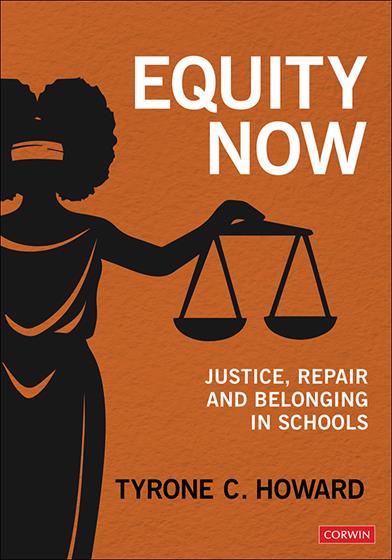Excerpted from Equity Now: Justice, Repair, and Belonging in Schools by Tyrone C. Howard. Copyright (c) 2024 by Corwin Press, Inc. All rights reserved.
Hate speech is often deliberate and meant to be hurtful, while microaggressions are often more common, subtle everyday slights directed at someone’s identity. Microaggressions can be intentional or unintentional, and often perpetrators are unaware of the injury that they may have caused. Hate speech, on the other hand, is usually intentional and a direct attack on some aspect of a person’s individual or group identity. Both are problematic at schools and happen far too often, especially to minoritized students. Educators can and must play a role to stop hate speech in schools. Here are some steps that can be taken to address racism and hate speech in schools and classrooms:
1. Address the issue (do not ignore it!)
 Far too often, when teachers hear hate speech, there is a tendency to ignore it because they are not sure how to address it. Teachers might think, “I am not sure what to say” or “How should I address a racially insensitive word?” or “It wasn’t my issue.” Whenever hearing hate speech, teachers and leaders should immediately speak out against it, tell students that such talk and actions will not be tolerated, and be firm in such a stance. Silence on these matters is complicity, does not protect students and only gives license for more hateful language to be used in the classroom or schoolyard.
Far too often, when teachers hear hate speech, there is a tendency to ignore it because they are not sure how to address it. Teachers might think, “I am not sure what to say” or “How should I address a racially insensitive word?” or “It wasn’t my issue.” Whenever hearing hate speech, teachers and leaders should immediately speak out against it, tell students that such talk and actions will not be tolerated, and be firm in such a stance. Silence on these matters is complicity, does not protect students and only gives license for more hateful language to be used in the classroom or schoolyard.
2. Research the topic or the offensive language
When caught off guard with hate language, use it as a teachable moment, for yourself and for your students. But always keep in mind that we cannot teach what we do not know. If we do not know the history of hateful language used to demean different racial/ethnic groups, women, LGBTQ+ members, people of particular religious backgrounds or people who are born in another country, then we need to learn. It is incumbent for teachers to educate themselves and study about topics, issues and language that are divisive or hateful. Then share with students about the way hateful language has led to many people dying in our country and beyond.
3. Increase your own racial literacy
Demographers state that in the year 2042, our nation will be predominantly comprised of non-white people. Our country’s racial, ethnic and linguistic demography is changing rapidly. Thus, teachers need to increase their racial literacy to better understand, connect with and teach today’s learners. Race-based hate crimes remain the number-one type of hate crime in the United States. Hate is learned, and all adults must speak out about it. Approximately 80% of our teaching population is white, and over half of our student population is non-white. All teachers must work to increase their racial literacy. Ignorance and indifference fuel hate. Much of the hate speech in schools today is focused on racial hatred or discrimination. Increase your literacy to inform your students.
4. Examine content in the curriculum
Frequently, school content and curriculum can have language, examples or images that implicitly or explicitly convey hateful messages. Teachers must be diligent in examining anything that could be controversial in textbooks, literature or videos shared in the classroom. Such content should be excluded from what students are being taught, but skilled teachers may choose to have educative discussions about why certain language is used in content and why it should be removed.
5. Generate discussion in your class around hate language
No matter the grade level or subject matter, teachers need to have conversations early and often about the zero tolerance for hate speech in their classrooms and across the school. Introduce concepts and lessons about the history of certain words and how they were used to dehumanize people. I recall a middle school teacher I worked with in Ohio who was masterful in teaching a lesson about the death of Matthew Shepard and how hate, ignorance and violence toward members of the LGBTQ+ community were at the root of his tragic death. The discussion the lesson generated was powerful, insightful and emotional. Students talked about how they did not realize that phrases such as “that’s so gay” contribute to the mistreatment of people and learned not only that they need to stop using such language but also how they can speak up and be upstanders when they hear friends and peers using such language.
6. Bring in guest speakers
One of the more powerful approaches that teachers can take to help students learn about diversity is to hear firsthand from people from different groups who can talk about cultural practices, lived experiences or historical events that are age appropriate and tied to particular subject matter. Ask colleagues or parents/caregivers about who might be ideal speakers to talk to your students.
